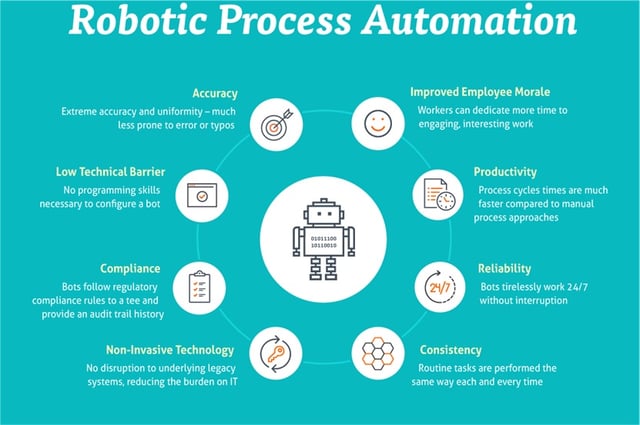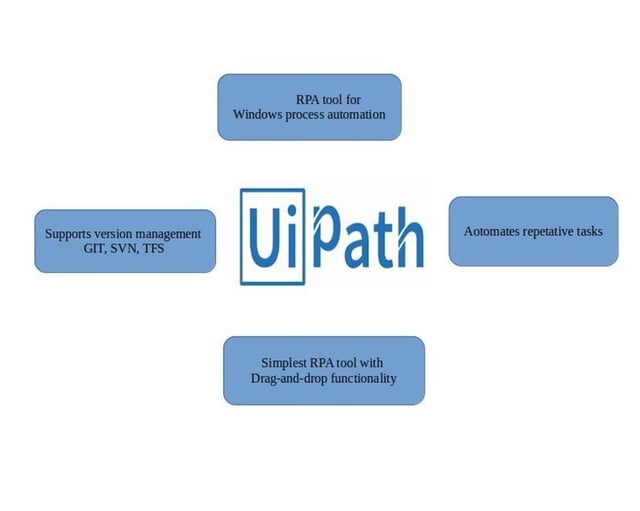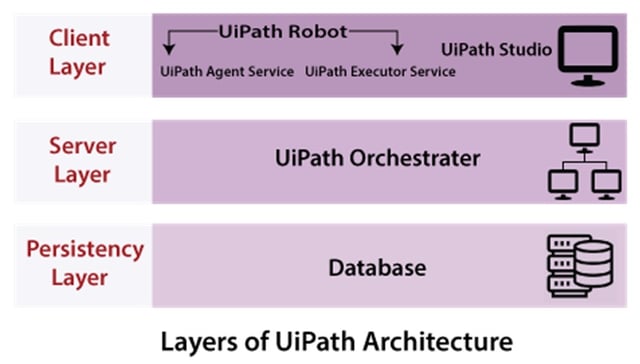The Value of Robotic Process Automation
Robotic Process Automation (RPA) helps automate processes, allowing early adopters in service delivery and GBS (Global Business Services) to achieve cost efficiencies and create more nimble and competitive businesses. At the same time, quality increases while workers are freed up to perform higher-level tasks and analysis.
The automation process using RPA is very simple to integrate and it does not require programming skills. It is lightweight in the sense that it doesn't need a lot of IT involvement to get it up and running. Business operations personnel can quickly learn how to configure and apply the robots.
Further, the reduction of data entry and other manual errors is one of the primary benefits of RPA implementation. It reduces errors and creates a non-distracting work environment as machines do not get distracted!
In this article, we will discuss why RPA is often a good choice for automating business processes. However, it’s worth noting that API-based automation can sometimes yield better performance. For example, suppose the information required for a single operation is spread across several different web pages or screens. In that case, API-based automation can access that information in one chunk, while using RPA means stepping through all the required pages or screens.
An Overview of UiPath
UiPath is a Windows desktop Robotic Process Automation (RPA) Software used for automation for various web, desktop, Citrix, and other applications.
In UiPath, processes built in Studio are executed as a human would. Robots can work unattended running without human supervision in any environment, virtual or not, or as assistants, where a human triggers the process.
UiPath works on flowchart and element activities, providing features including change management, deployment management, access control, process modeling, remote execution and scheduling, execution monitoring, auditing, and analytics. These capabilities allow organizations to maintain full compliance with security and governance best practices.
UiPath is an advanced RPA tool that enables you to visually design automation processes through diagrams. It provides complete end-to-end automation, which adds cognitive, computer vision, AI, and support for ML.

Advantages of UiPath for RPA Implementation
- Activity library- UiPath has an extensive activity library with pre-built drag-and-drop actions.
- Security- UiPath offers high-level security by enabling the storage and encryption of credentials on a centralized orchestrator.
- Recording- UiPath has recorders tailored for desktop apps and emulators, enabling quick creation of automation.
- Third-party integration- UiPath allows seamless integration with various technologies, enhancing flexibility and interoperability.
- Powerful Debugging- UiPath offers intuitive and flexible debugging options.
- Multi Repository Support- It can be integrated with many repositories like Git, SVN, and TFS.
- Easy Deployment- UiPath offers easy deployment processes, enabling swift implementation of automation solutions.
- Fastest Development- Compared to other RAP tools UiPath is easy and fast to develop, UiPath stands out for its ease and speed of development, accelerating the automation workflow.
UiPath Architecture

UiPath is designed for these situations. The primary goals of the UiPath include the following:
Step-1:
Helping organizations in automating business processes more quickly and at a lower cost in crucial. An important corollary of this is the ability to apply process automation to lower-value scenarios that might not be worth automating using more traditional approaches.
Step-2:
Providing tools that let business analysts play a significant role in creating and changing automated processes is important. The intent is both to help organizations do these things in less time and to reduce the need for IT involvement in the development process. This support for enterprise RPA enables organizations to create a robotic workforce.
However, we cannot avoid human intervention completely here. In certain instances, such as robotic checks or security checks, and during exceptional circumstances, minimal human activity may still be necessary. Consequently, RPA may not be the optimal choice in every scenario.
Conclusion
Automating business processes with RPA can have substantial business value. In situations where automation must be done quickly and at a low cost, changes are frequent, or where organizations must be able to manage repetitive tasks, relying on robotic process automation applications could be a good solution.

Author
Manjula K. R. is a Senior Software Developer at V-Soft Consulting. She is proficient in UiPath, Blue Prism, Power Automate, and Ruby on Rails development and implementation. Expertise in the Software Automation Life Cycle includes System study, Requirement gathering & Analysis, Development, Testing and Deployment. She is a tech enthusiast who always aspires to adopt leading-edge technologies.















